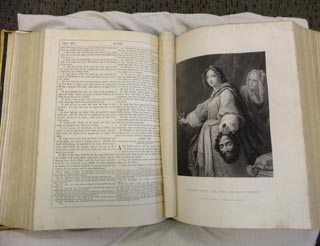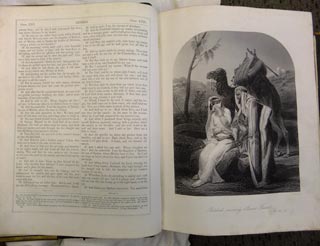The first substantial efforts to translate the complete Bible into English were made in the late-14th century by followers of the Oxford scholar John Wycliffe (d. 1384). The idea of an English Bible did not, however, immediately find fertile soil. In a world before printing, each copy of this controversial translation had to be written painstakingly by hand. Before Henry VIII's break with Rome, English Bibles also faced concerted opposition from England’s Church and state.
The second half of the 16th century saw a number of new English versions of the Bible. Some of these, such as the Geneva Bible, met the needs of Protestant reformers. The Geneva text, compiled by followers of Jean Calvin, had particular appeal for the Protestant group who would come to be known as Puritans. At the same time, Protestants were not the only group interested in producing a vernacular Bible.
The Douai-Reims Bible was created in response to the multiplication of Protestant English Bibles in the first half of the 16th century. It was the brainchild of Roman Catholics who fled England at the accession of Elizabeth I. This group established an English College in the Flemish town of Douai in 1568. Europe’s ongoing political upheavals led the College to relocate temporarily to Reims in nearby France. While there a team led by Gregory Martin completed a translation of the New Testament in 1582. Modern scholars now generally recognise that this text played an important role in the formation of the KJB. The Douai-Reims Old Testament did not, however, appear until 1609-10 by which time the English College was once again based in Flanders.
The key feature of the Douai-Reims Bible is that it is a translation based on the Latin Vulgate, not on the original Greek and Hebrew sources. This approach was imposed by the decision of the Council of Trent, a meeting of the leaders of the Catholic Church in response to the Reformation, to endorse St Jerome’s Latin text as the officially accepted Christian scripture. Versions of the Douai-Reims text remained the key English translation for Catholics until the mid-20th century.
Canterbury’s copy comes from the collection of John Grimes, the first Roman Catholic bishop of Christchurch. This edition was originally prepared in the early-19th century by George Leo Haydock, a member of the English College at Douai who returned to England during the French Revolution.




